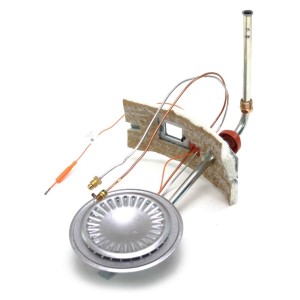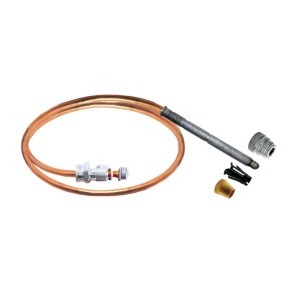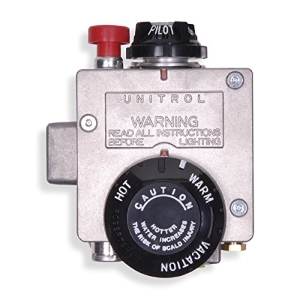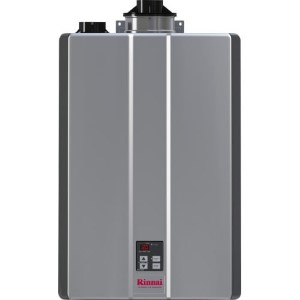Water Heater is Not Working - The Gas Burner Will Not Light
Troubleshooting & Repair Tips
 Image source: Pixabay
Image source: PixabayHow to repair a water heater that is not working and when a gas burner won’t light or stay lit? The usual culprit is the pilot light going out, but what if the problem is a gas burner, the element which generates the heat for water heating?
Let’s find out some of the reasons why your gas burner won’t ignite and a water heater is not heating water.
- Gas supply issues
- Dirt in gas lines
- Combustion air interruption
- Flame arrestor openings blocked
- Pilot line or orifice clogged
- Defective thermocouple
- Main burner line clogged
- Gas control valve set too low
- Defective gas control valve
- Heater installed in a confined area
If you require professional assistance, contact your local water heater expert! Get FREE estimates here!
Gas supply issues
This is a simple one as there is no repair needed from your side. You can only check with the gas utility company why the gas pressure is reduced, or the gas supply interrupted. They will let you know when the gas service will be restored fully.
Dirt in gas lines
Gas lines can get clogged and block normal gas flow for many reasons, including dirt, debris, water, insects, tree roots, rust, and physical pipe deformation.
Leaving clogged gas lines unrepaired can affect proper working conditions and can lead to a risky and very dangerous situation.
Loose debris can also clog a gas orifice or control valve, making the combustion unreliable and unsafe. This is why a drip leg or sediment trap is important to install in the gas line.
As soon as you notice improper gas combustion or unstable flame, notify your local gas technician or utility company.
The first sign of a blocked gas supply is if your water heater or any other gas device is not working as it is supposed to. The flame cannot increase even if there is a request. Or, you might smell a gas.
While there are some tips on how to clean the clogged lines, our recommendation is to call a professional technician when dealing with gas issues.
Combustion air intake interruption
Gas water heaters, like other gas appliances, need sufficient airflow for proper operation.
If there is not enough oxygen supply for gas burning, it will result in:
- Pilot outage
- Sooting
- Yellow flames
- Unstable flame
- Potential carbon monoxide exposure
- The smell of burnt gas
Some water heaters include a flame arrestor and air intake screens to prevent larger particles of dirt, dust, and lint from entering a water heater, leading to airflow obstructions and improper gas combustion.
In order to prevent that, clean the flame arrestor found under the unit and combustion chamber (must be cold) using a vacuum cleaner and wire brush.
Flame arrestor openings blocked
The flame arrestor is a device made of fireproof ceramic material and is built into the water heater’s base. If the flammable vapors occur (paint, gasoline, and such) inside the combustion chamber, it prevents any flames from escaping the combustion chamber and causes accidental fire or explosion.
The flame arrestor is protected by an LDO screen designed to minimize lint, dust, and oil-based particles. If the screen is blocked, your water heater can suffer poor combustion, pilot outage, increased temperature inside the combustion chamber, and eventually trigger TCO switch, shutting down the heater.
This is why a flame arrestor and LDO screen need to be cleaned regularly so combustion air can freely reach the gas burner.
Use a vacuum cleaner and stiff brush, also a flashlight and mirror if needed, to remove dirt, dust, and lint from the LDO screen, including the top and bottom of the flame arrestor.
If there was flammable vapor ignition, a professional technician must inspect the flame arrestor for cracks and damages. It must be replaced if damaged.
Pilot line or orifice clogged
 Pilot light assembly
Pilot light assemblySome gas water heaters are equipped with a pilot light to light the main gas burner. The pilot must burn non-stop for a water heater to operate correctly. It should burn with a stable blue /yellow flame.
If the pilot line or orifice gets clogged, the flame becomes smaller, burning the yellow/red flame. When the pilot is low, it won’t be able to keep the thermocouple hot enough and the gas valve open.
In order to clean the pilot line, you have to take it apart. This is an easy job; just follow the instructions found in the manual. It looks something like this:
- Turn the gas off on the main shutoff valve that is supplying a water heater.
- Remove the cover plate at the bottom of the water heater, if possible.
- Locate the pilot tube connected to the gas valve with the nut and disconnect it. There is also a thermocouple attached. If needed, disconnect it too.
- Since you removed the access panel at the bottom of the tank, look inside to find a bracket holding both the pilot tube and a thermocouple. Unscrew two screws that connect the bracket to the burner assembly tube.
- In some water heaters, when you unsnap the access panel, you can pull out the whole burner assembly as well.
- Once free, you can now check and clean the pilot orifice and a tube using a piece of wire, wire brush, and fine-grit sandpaper. Clean the debris from the thermocouple too.
Another reason gas delivery through the pilot tubing is interrupted is that the line is twisted, pinched, or damaged.
Defective thermocouple
 Water heater thermocouple
Water heater thermocoupleIf the pilot light goes out after lighting or does not relight, the most common cause is a defective thermocouple. An adequately operated thermocouple is designed to keep the gas control valve open only when the pilot is on. When the pilot light remains lit, the thermocouple stays hot, generating a small electrical current, keeping the gas valve open, and preventing any gas leaks. This way, gas is delivered to the main gas burner.
If the pilot light is lighting correctly, but the thermocouple cannot sense the flame appropriately, the main burner won’t turn on because the gas valve didn’t open, and there is no gas flow.
In this case, you might have to clean off any corrosion or deposits from the thermocouple.
To properly sense the flame (heat), a thermocouple should have a tip and half its length immersed in the pilot flame.
Use a multi-meter to measure the thermocouple output. It is usually specified by the manufacturer.
If the reading is not as specified, replace it with the new thermocouple. Replacing a thermocouple is easy; just follow the instructions from above or as found in the manual.
Main burner line clogged
You can clean the main burner line while testing or cleaning the pilot or thermocouple, as described in the above text.
Gas control valve (thermostat) set too low
 Gas valve and thermostat
Gas valve and thermostatTurn the temperature dial to the desired temperature. A recommended temperature is 120 to 125 F.
Defective gas control valve
If a gas control valve is defective, do not try to repair it. This is a safety device that must be replaced if it is not operating properly. Contact your local professional plumber for expert advice.
Water heater installed in a confined area
An indoor gas water heater, either using natural gas or propane, cannot operate correctly if there is not enough air for combustion. The clean air must enter the combustion chamber from the base and a flue vent from below the draft hood.
Gas heaters can be installed in confined or unconfined spaces where combustion air and ventilation must be taken care of properly and per codes. Failure to provide the correct amount of air can lead to improper operation, property damage, and health hazard.
A confined area is a space (a closet, for example) having a volume of less than 50 cubic feet per 1000 BTU/hr. In addition to this requirement, gas water heaters need approximately 12.5 cubic feet of air for every 1000 BTU of heat generated.
This air for gas combustion can come from inside the building or outdoors.
If the air is coming from inside your house, the confined space should be provided with two permanent openings with an adjacent room of sufficient volume.
Two permanent openings should also be provided if the air comes from outdoors, either directly or using ducts.
These openings are usually located 12 inches from the floor and 12 inches from the ceiling and the size depends on the total calculated BTU of all gas appliances installed in that space.
Note: To calculate the required combustion air, include all gas-powered appliances in the calculation. For proper sizing and location of combustion air ducts and openings, refer to the model manual or local codes.
How does the gas burner operate?
Before troubleshooting a water heater burner that won’t light, it is important to know how it works.
The gas burner is an element that heats the water. It is designed to work only when the incoming water flow activates the thermostat, and the gas control valve opens. It burns until the tank reaches the set temperature on the thermostat.
The gas burner is part of the burner assembly together with the burner orifice, gas supply tube, pilot assembly with the pilot burner orifice, pilot burner gas supply tube, and thermocouple.
The assembly is located at the bottom of the heater, behind a metal access panel and the viewing port, where you can visually inspect the status of the flame. It is recommended to visually inspect the main burner and other elements at least once a year. If you don’t see the flame and none of the above suggestions work, or you have any doubt, contact your local plumber to do the job correctly.


